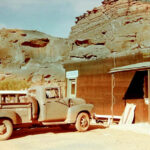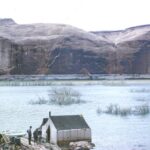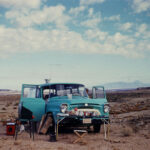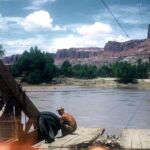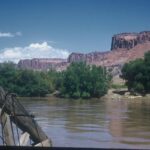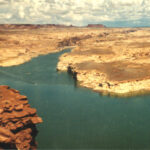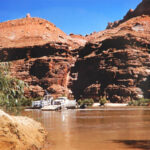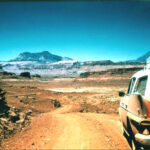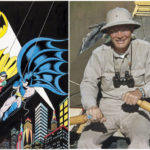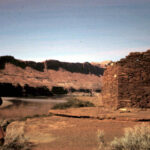
By the end of 2004 the water level in Lake Powell had dropped more than a hundred feet. Seven years of drought had greatly reduced water flow into the lake. At the same time, an ever-increasing demand for irrigation and municipal water was sucking the lake dry. Utah, Arizona, California and Nevada all had straws in the water. Competition over who could get the most was intense.
But, for some of us, the fading fortunes of the lake were not all dark and gloomy. The dramatic drop in water level presented a possibility that intrigued some of us. If the water was that low, what had happened to the old Indian fort at the mouth of White Canyon? Was it possible that Old Fort Moki would be coming out of the water again?

